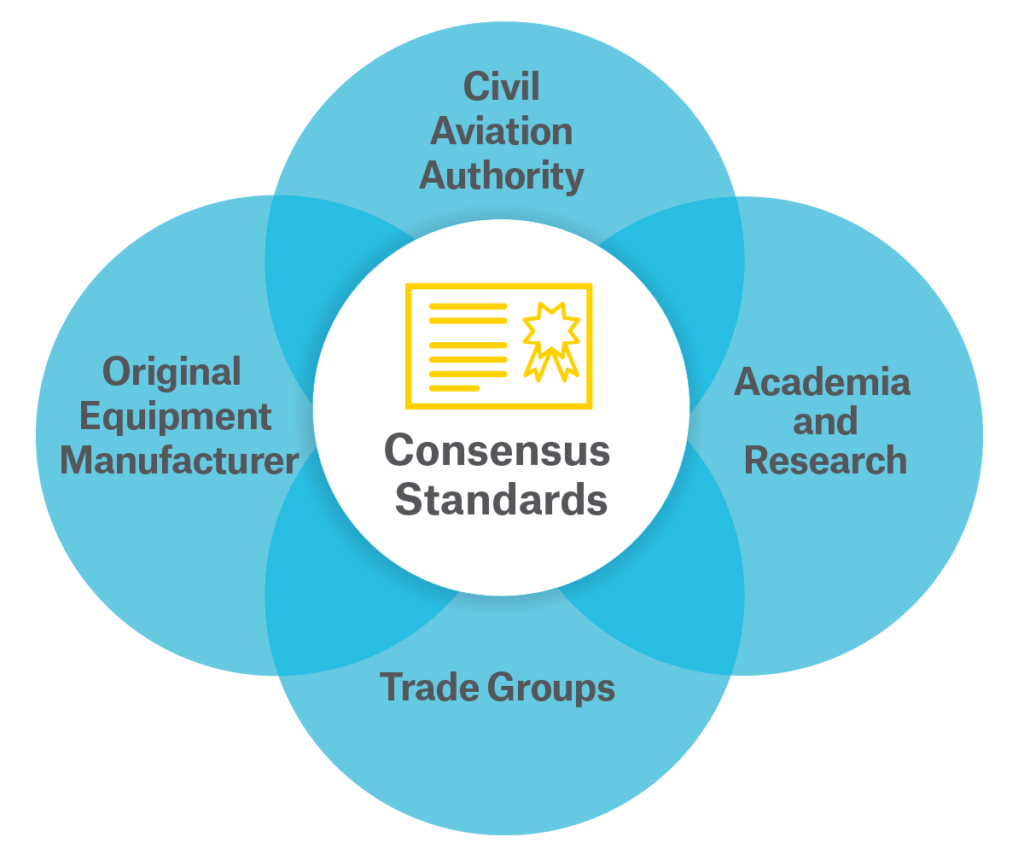The Federal Aviation Administration (FAA) recognizes the importance of stakeholders – including industry, authorities, users, and academia – in developing consensus standards to support compliance to less prescriptive rules in the preamble to the Notice of Proposed Rulemaking that amended 14 CFR Part 23, titled Revision of Airworthiness Standards for Normal, Utility, Acrobatic, and Commuter Category Airplanes to a performance-based rule,
In response to the National Transportation Safety Board’s concerns about new technology, the FAA found that shifting compliance emphasis to industry consensus standards was critical to ensuring the safety of new technology. This shift would allow the FAA to leverage technical experts from across the aerospace industry and from outside the traditional aerospace industry to develop standards for new technologies.
Wisk recognizes the value of supporting consensus standards development and applauds both the FAA and the European Aviation Safety Agency (EASA) for implementing rules that give industry a substantial stake in crafting language that facilitates the compliance process.
“We appreciate the opportunity to roll up our sleeves alongside regulators to tackle areas where there has been little or no guidance for applicants such as for distributed electric propulsion, highly autonomous onboard systems for flight path control, sensing and health monitoring, and ground infrastructure such as charging and vertiports,” says Wisk’s Lead of Regulatory Affairs, Tom Gunnarson.
Wisk Works with Many Standards Organizations
Gunnarson coordinates Wisk personnel who hold technical and leadership positions in numerous standards development organizations (SDOs) that help industries develop consensus standards. These organizations include ASTM International, the European Organization for Civil Aviation Equipment (EUROCAE), The Radio Technical Commission for Aeronautics (RTCA) and SAE International. “The authorities prefer an industry consensus position on certification compared to individual proposals that must then be repeated for each applicant,” said Gunnarson. “While we are in the early stages of developing a new aviation sector with many new and novel ideas, there are opportunities to use the standardization process, saving authorities cost and time in the approval process.

In June, Gunnarson was elected secretary of EUROCAE Working Group 112 on Vertical Takeoff and Landing (VTOL) and participated in the group’s plenary session held at EASA headquarters in December. “Being able to spend a few days face-to-face discussing standards with the European Union Aviation Safety Agency (EASA) specialists was invaluable,” said Gunnarson. “Wisk now better understands EASA’s expectations and can work with them and FAA to find validation solutions in areas unique to Wisk’s platform and future operation.” As standards support regulations, it is ideal when rules are similar enough that a standard can have global application. The open nature of standards process provides a forum for discussion between industry and authorities when rules do not align.
Wisk remains committed to supporting the SDOs that are helping eVTOL stakeholders forge new standards, especially in areas where new and novel technologies will bring new capabilities to benefit the flying public.